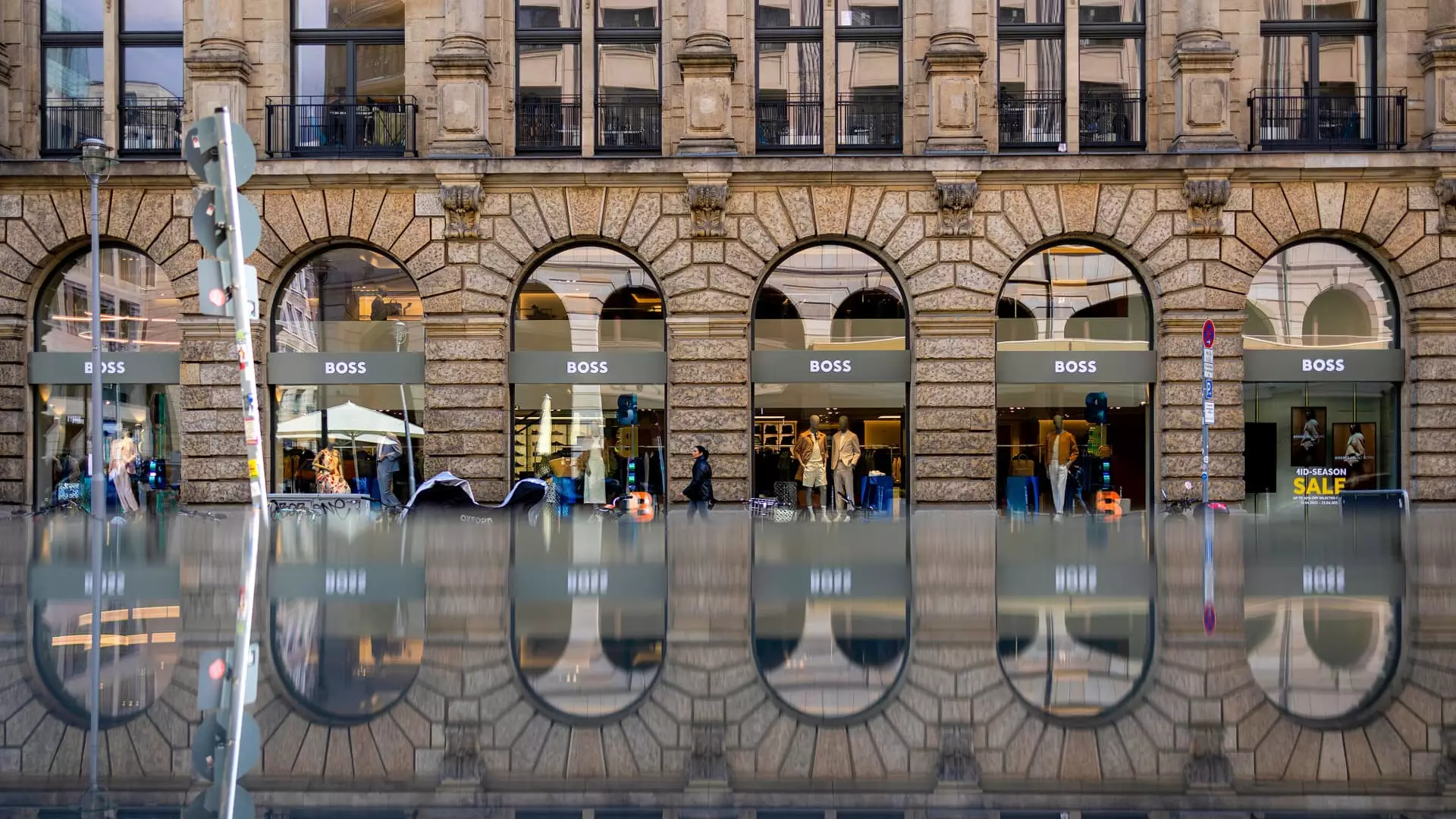In a world often shaken by economic uncertainties, the luxury fashion brand Hugo Boss has recently demonstrated an unexpected degree of resilience. Despite facing a 2% decline in first-quarter sales amounting to 999 million euros, the German retailer managed to exceed analyst expectations, with forecasts estimating revenues at around 979 million euros. This news, coupled with the company’s decision to maintain its full-year sales guidance, has prompted a significant uptick in its stock prices—surging as much as 8.8% after the announcement. While this looks promising at surface level, we must delve deeper into the core of these numbers and understand the broader implications for both the brand and the economy.
Hugo Boss, like many of its peers in the retail sector, is grappling with a pivotal moment. CEO Daniel Grieder emphasized the rising macroeconomic uncertainties that are increasingly dictating consumer behavior, particularly in the Asia-Pacific region where demand has waned significantly. The situation in China, a critical market, has been particularly bleaker. With a cautious outlook, one must ponder whether this performance can be sustained or if it merely represents a brief respite in an otherwise tumultuous landscape.
Dependence on the U.S. Market: A Double-Edged Sword
One of the major concerns highlighted by the company is its heavy reliance on the U.S. market, which accounts for roughly 15% of its total revenues. This dependence presents a double-edged sword—while the U.S. operates as a lucrative customer base, the growing frictions surrounding tariffs and immigration policies present significant risks. Hugo Boss does not conduct any domestic manufacturing in the States, with up to 40% of its exports originating from Europe and a troubling “mid-single-digit percentage” sourced from China.
Grieder acknowledged that while consumer confidence in the U.S. has sharply declined, dynamic tariff discussions complicate their forecasting efforts. Here lies the problem: uncertainty breeds caution among consumers, which in turn stymies spending in the luxury sector. Brands like Hugo Boss must tread carefully, being mindful of the external variables they cannot control but depend upon for their financial vitality.
Strategic Maneuvering: Adapt or Perish
In the face of impending economic challenges, Grieder and his team are not sitting idly by. Several proactive measures aim to mitigate potential negative impacts stemming from tariffs. Their strategy includes redirecting product flows from China to other markets while optimizing their global supply chain to reduce vulnerabilities. Furthermore, the company has hinted at potential price adjustments in response to evolving demand, a strategic pincer move necessitated by external pressures.
This realignment acknowledges a shifting luxury marketplace and the need to cater to rapidly evolving consumer preferences. The company must also harness its capabilities in product diversification, which is instrumental in mitigating risks associated with overdependence on a single revenue stream. The question remains: will King Hugo adapt fast enough to capture the zeitgeist or find itself mired in an antiquated model?
Reimaging Women’s Fashion: An Untapped Frontier
Interestingly, while some sections of the business show promise, others, particularly in women’s fashion, have been identified as areas for substantial improvement. Industry analysts have noted a lack of standout products and a coherent strategy in this sector, which could spell disaster unless addressed swiftly. The call for an acquisition of an established female fashion brand could expedite growth, enabling Hugo Boss to reclaim its competitive edge and engage a broader audience.
It’s crucial to point out that the opportunity for rebirth exists within the luxury segment due to consumer priorities shifting toward authenticity and sustainability. Brands must transform in order to captivate a younger, discerning audience. Hugo Boss will need to dig deep into market research and consumer insights, crafting an image that not only resonates with contemporary ideals but also sets trends rather than following them.
Final Thoughts on Market Dynamics
Hugo Boss is currently navigating a complex landscape, teetering between opportunities for growth and the heavy burdens of economic uncertainty. Their fortitude amid adversity could pave the way for a brand renaissance, or it might become a cautionary tale of missed opportunities. The stakes could hardly be higher as high fashion and fast-changing market conditions demand nothing less than strategic brilliance. The future could shine brightly on Hugo Boss or serve as a reminder of the fragility of the luxury sector in a period of political and economic flux. Thus, the question to ask is not merely what lies ahead but rather who will emerge as the victor when the dust finally settles.

